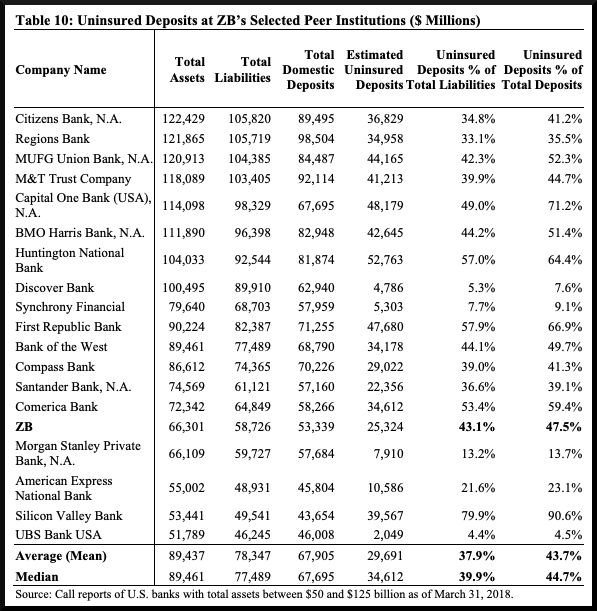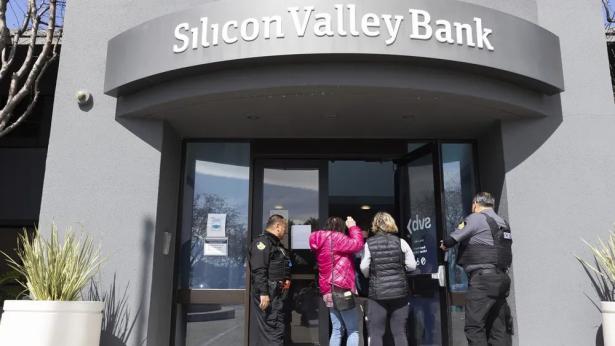As lawmakers look for clues about the corporate and regulatory failures at the root of the current bank crisis, a little-noticed report from the government’s top regulators could be one of the smoking guns. It shows that years before customers tried to flee Silicon Valley Bank (SVB) en masse, leading to its collapse, regulators knew that the nature of the bank’s deposits made it especially susceptible to such bank runs.
And yet despite that risk, no evidence has surfaced showing regulators did anything to reduce it. Instead, the Federal Reserve soon after approved SVB’s merger, declaring that the bank would not “pose significant risk to the financial system in the event of financial distress.”
Less than two years after that, regulators announced they would be bailing out the bank’s uninsured depositors.
The warning sign came five years before that bailout. It was July 2018, just after President Donald Trump signed a bill rolling back the Dodd–Frank Wall Street Reform and Consumer Protection Act, passed after the financial crisis to improve oversight of banks. At the time, the Financial Stability Oversight Council (FSOC), set up by Dodd-Frank to identify risks to the financial system, published a list of major mid-sized banks and their levels of deposits with no federal insurance. If these banks were to fail, the uninsured deposits would not be accessible to the depositors.
One financial institution stood out for having far more uninsured deposits than all the others: Silicon Valley Bank, where more than 90 percent of the deposits were uninsured. In comparison, on average, the other mid-sized banks had 44 percent of their deposits uninsured. (Today, uninsured deposits constitute more than $8 trillion — about 40 percent — of all bank deposits.)
Third on the list for most uninsured deposits was First Republic Bank, which had 67 percent of its deposits uninsured. Last week, shortly after SVB’s collapse, large banks deposited $30 billion in First Republic amid a run on its deposits, in an attempt to prevent another bank failure.

FSOC Study of Uninsured Deposits at Mid-Sized Banks in 2018
The list was part of a report that the council — composed of top officials at the Treasury Department, Federal Deposit Insurance Corporation (FDIC) and Federal Reserve — had published about its decision to remove its “systemic risk” label from a different mid-sized bank.
In the same report, the council warned that uninsured deposits are at a much higher risk of bank runs than insured deposits.
“FDIC-insured deposits and uninsured deposits have different degrees of risk, and therefore would generally be subject to runs of different severity,” the report says. “If a bank were to experience material financial distress, FDIC-insured deposits would be expected to run at a considerably lower rate than uninsured deposits.”
According to the report, a 2018 paper by three FDIC economists found that, “at one banking institution, in a context of significant bank-specific distress, uninsured deposit accounts liquidate at a rate 92 percent faster than other accounts. The authors determined that their findings generalize to other banks.”
And yet despite that acknowledgement, regulators appeared to take no action to force SVB to mitigate the risk posed by its high proportion of uninsured deposits, nor to subject the bank to enhanced supervision. “If examiners believe banks are operating in an unsafe and unsound manner, they can use their prompt corrective action authority to impose significant remedies on banks,” said Todd Phillips, a former attorney at the FDIC. Regulators could have required SVB to hedge against the risk posed by rising interest rates, or increase its cash reserves, for example.
Outside experts say high proportions of uninsured deposits are a major bank-run risk factor that should have prompted the council to take regulatory action.
“Having high levels of uninsured deposits should have been a risk that examiners identified,” said Phillips. “As we saw, SVB’s uninsured depositors ran when the bank got into trouble. Going forward, supervisors need to be cognizant of this risk and require banks to diversify their deposit base.”
Cornell University law professor Robert Hockett agreed. “Even after the 2018 rollback of Dodd-Frank, this would have been something that any sensible prudential regulator…would flag and then follow-up on,” said Hockett. “It is the quintessential risk for an institution of this type, going back even before the old ‘tulip crisis’ in Amsterdam centuries ago.”
David Sirota. Founder/editor in chief, The Lever; Oscar nominated for DON'T LOOK UP; Bernie Sanders' presidential campaign speechwriter in 2020.
Julia Rock. Staff reporter for The Lever.
The Lever, formerly known as The Daily Poster, is a reader-supported investigative news outlet that holds accountable the people and corporations manipulating the levers of power. The organization was founded by owner David Sirota, an award-winning journalist and Oscar-nominated writer who served as the presidential campaign speechwriter for Bernie Sanders.
The Lever’s reporting, podcasts, videos, and live events focus on politics, business and corruption — and how money shapes and distorts economic and environmental policy. All of our stories are sourced to documents and facts, and the documents and facts are linked so that readers can review and verify them.
We believe a functioning democracy requires a vibrant independent media and aggressive reporting, rather than corporate media promoting propaganda.
We believe fearless subscriber-supported journalism can create leverage that forces politicians and corporations to fulfill their promises.
To paraphrase Archimedes: We believe that with a strong enough lever, we can help move the world.
Click HERE to support The Lever, you choose the level of support.


Spread the word